Cogsuite is a battery of seven neuropsychological assessments based on advances in neuroscientific theory and experimental cognitive psychology methods. These evaluative measures are brief, tolerable, reliable, and sensitive with specificity. They can be administered remotely or in office. The Cogsuite battery covers cognitive domains including attention, executive function, working memory, verbal abilities, motor function, and processing speed.
Circus Cannon Twins
Mental Rotation Task
Cogsuite’s Circus Cannon Twins game measures visuospatial ability based on reaction time and accuracy at varying rotational conditions.
During the 5 minute 80 trial administration, paired stimuli represented as twin acrobats, are presented to users who are prompted to decide whether the pair is identical after mentally rotating one of them to the orientation of other. Acrobats may be rotated at increasing angles (45, 90, 135, and 180 degrees) from each other to vary rotational load.
Task – Mental Rotation
Measurement Time – Approximately 5 minutes
Blocks – 8
Trials per Block – 10
Total Trials – 80
Target Display Time – 3000 ms
Intertrial Interval – 1500 ms
Measures – Reaction Time, Accuracy
Measure Dimensions – Left Rotation, Right Rotation, Degree Rotation (0-160), Degree Control, Block
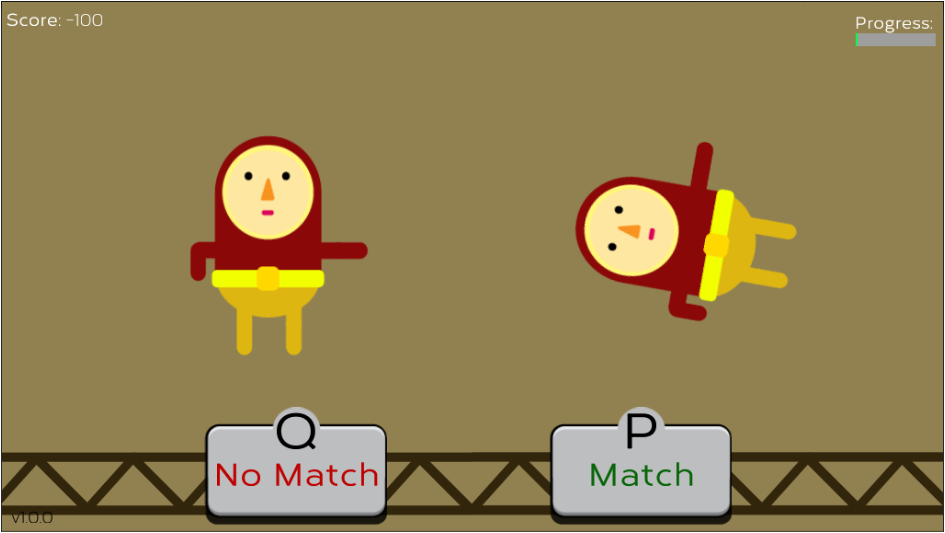
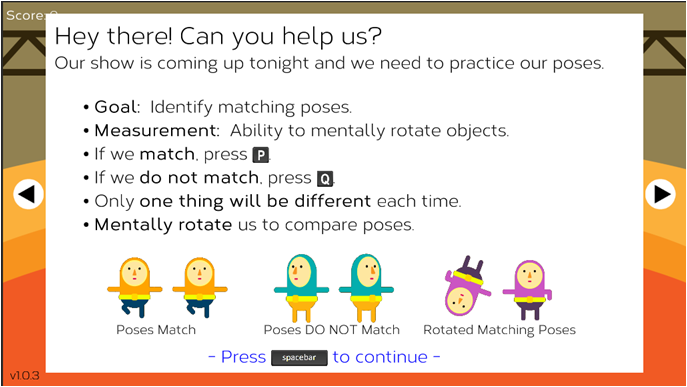
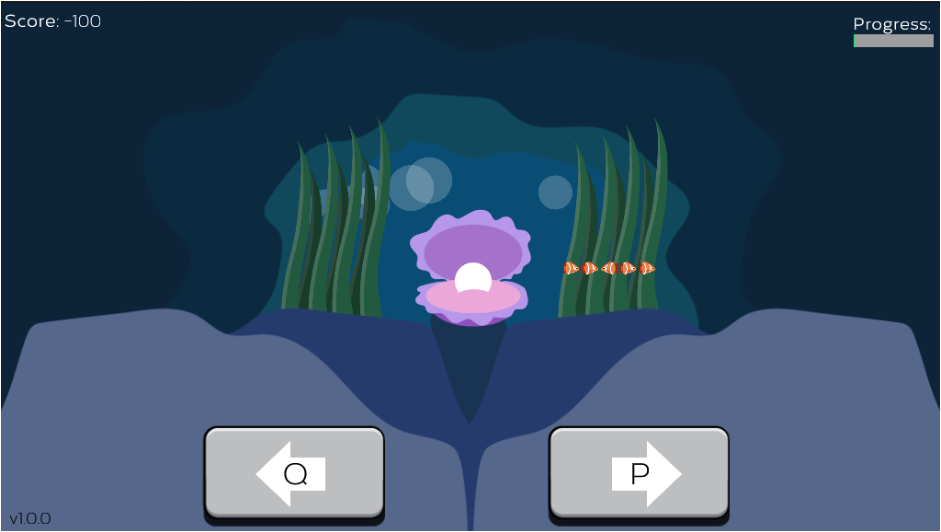
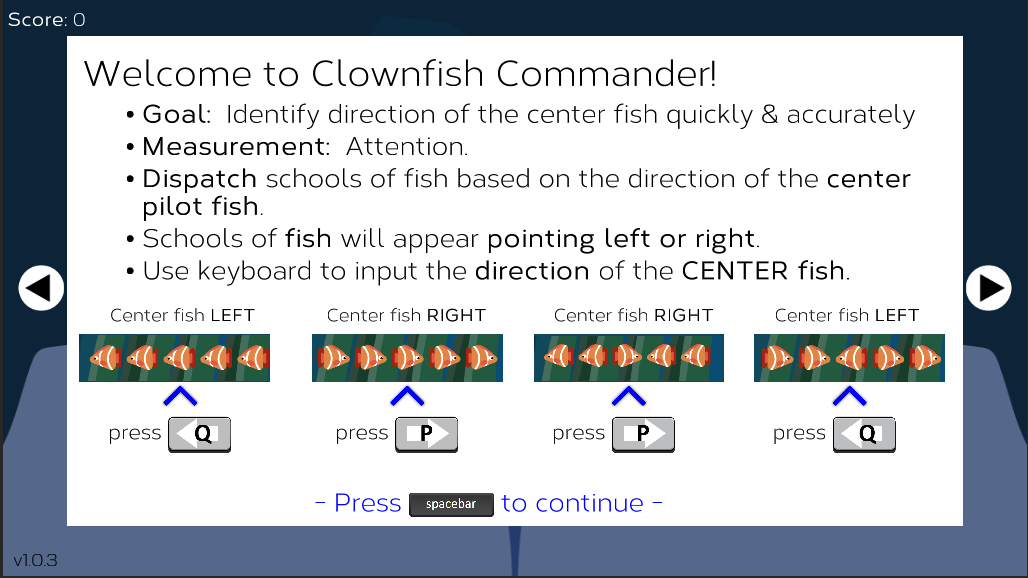
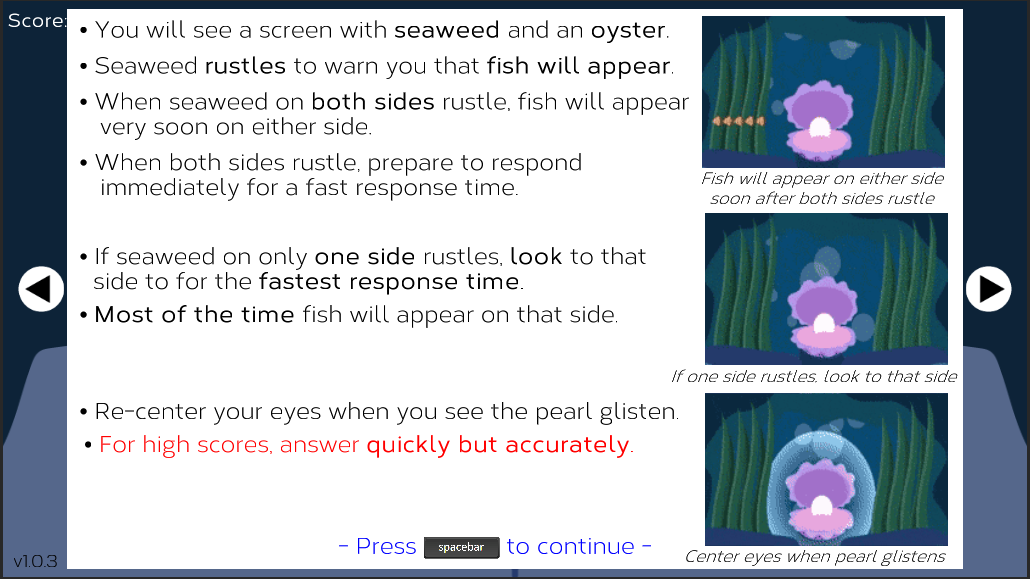
Clownfish Commander
Attention Network Task
Cogsuite’s Clownfish Commander game is an Attention Network Task (ANT) that measures three components of attention: Alerting, Orienting, and Executive Function. The Alerting component represents the earliest attention-related process and reflects arousal; the Orienting component represents attentional shifting; and the Executive component represents the resolution of conflicting stimulus information.
During the 14 minute 244 trial administration, subjects are prompted to determine the direction of the center clownfish in the flanker array. A flanker array is modeled as a clown fish school that can appear on the left or right side of a fixation which is represented by an oyster with a pearl. Background seaweed rustles, providing a cue. The target flanker array of fish is preceded by one of three cue conditions: no cue – no cue is presented; double cue – seaweed on both side rustle; valid cue – seaweed rustles on the side that the fish appear; invalid cue – seaweed rustles on opposite side that the fish appear.
Task – Attention Network
Measurement Time – Approximately 14 minutes
Blocks – 12
Trials per Block – 12
Total Trials – 244
Target Display Time – 1500 ms
Intertrial Interval – Pseudo-random (1000, 1500, 1750, 2000, 2250, 2500, 3000, 3200, 3500, 4000, 8000 ms)
Fixation Flash Time – 50ms
Cue Arrive Time – 100ms
Cue Flash Time – 100ms
Target Arrive Time – 100ms
Measures – Reaction Time, Accuracy, Network Effects (Alerting, Orienting, Validity, Executive)
Measure Dimensions – Left Side, Right Side, Cue (None, Valid, Invalid, Double), Congruence (Congruent, Incongruent), Block
Quickbot Inspector
N-Back Task
Cogsuite’s Quickbot Inspector game is a visual N-Back task that consists of the successive presentation of robots marked with single letters. Users are required to determine if the currently presented letter is a match or non-match depending on condition criteria.
This assessment includes four condition criteria:
- 0-Back: The currently presented letter matches a specific provided letter. Example: J where the match criteria is the letter J.
- 1-Back: The currently presented letter is the same as the one immediately preceding it (i.e. 1 back). Example: Y-Y
- 2-Back: The currently presented letter is the same as the one two back from it. Example: Q-I-Q
- 3-Back: The currently presented letter is the same as the one three back from it. Example: T-O-U-T
The four condition criteria are administered separately from 0-Back to 3-Back across 4 blocks of 36 trials each (144 total trials). The total test time is approximately 6 minutes.
Working memory load is increased or decreased based on the number of successive letters that must be kept in memory.
Task – N-Back
Measurement Time – Approximately 6 minutes
Blocks – 4
Trials per Block – 36
Total Trials – 144
Target Display Time – 1000 ms
Intertrial Interval – 1500 ms
Measures – Reaction Time, Accuracy
Measure Dimensions – Match (Target, Foil), Condition (0-Back, 1-Back, 2-Back, 3-Back)
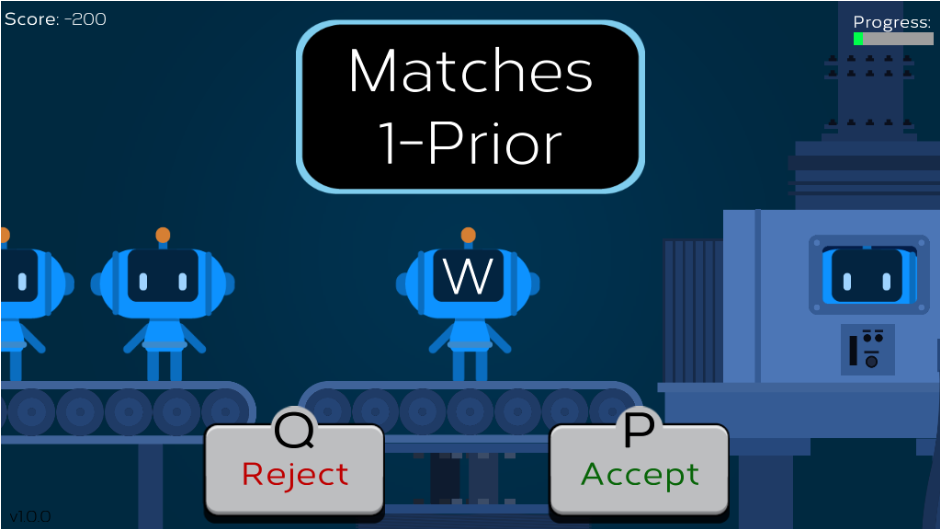
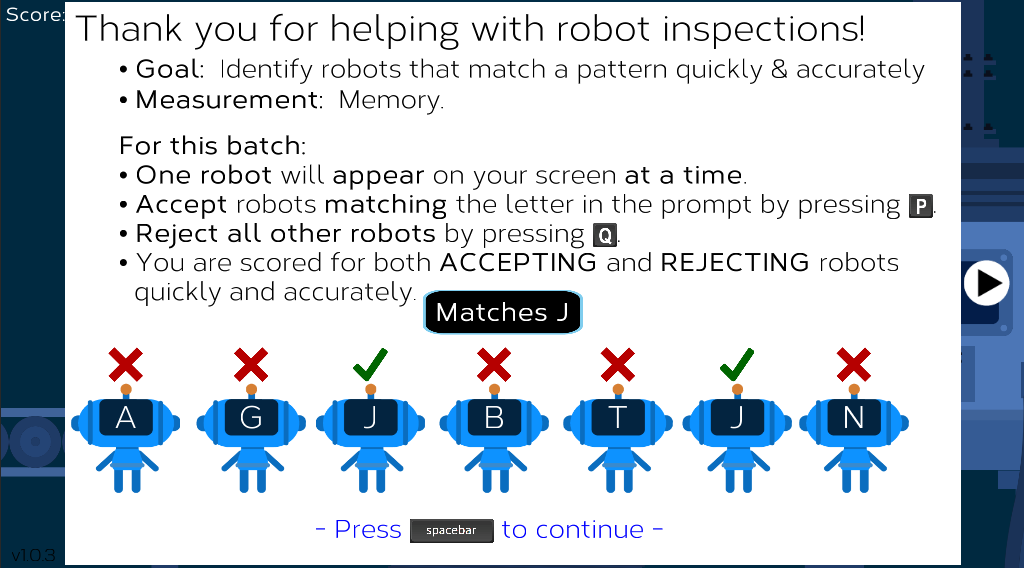
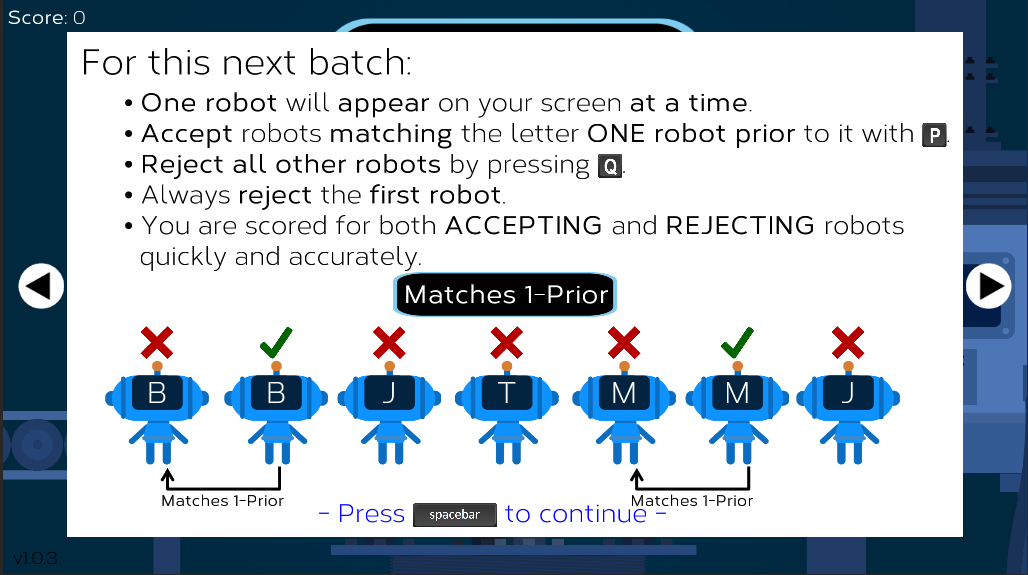
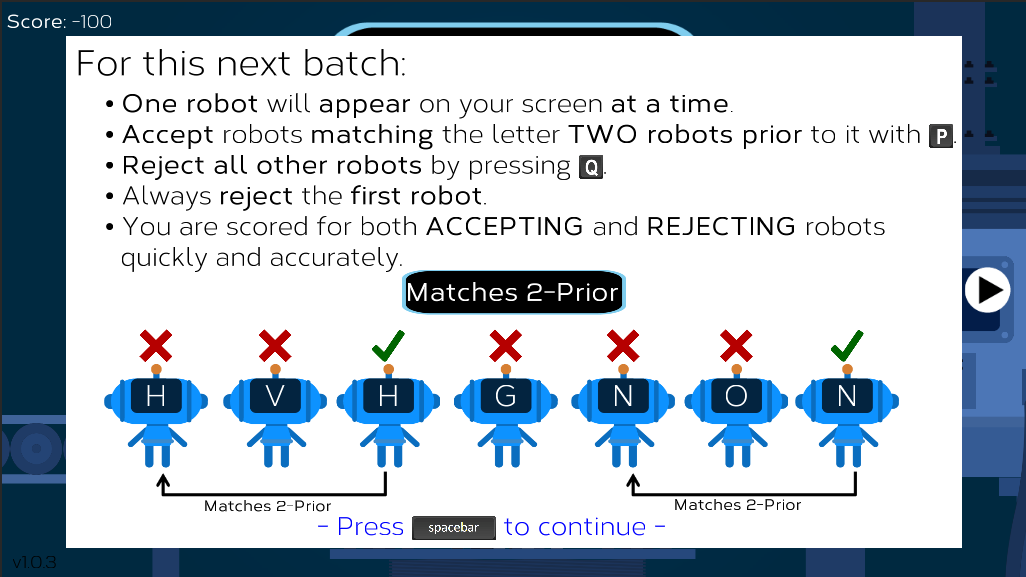
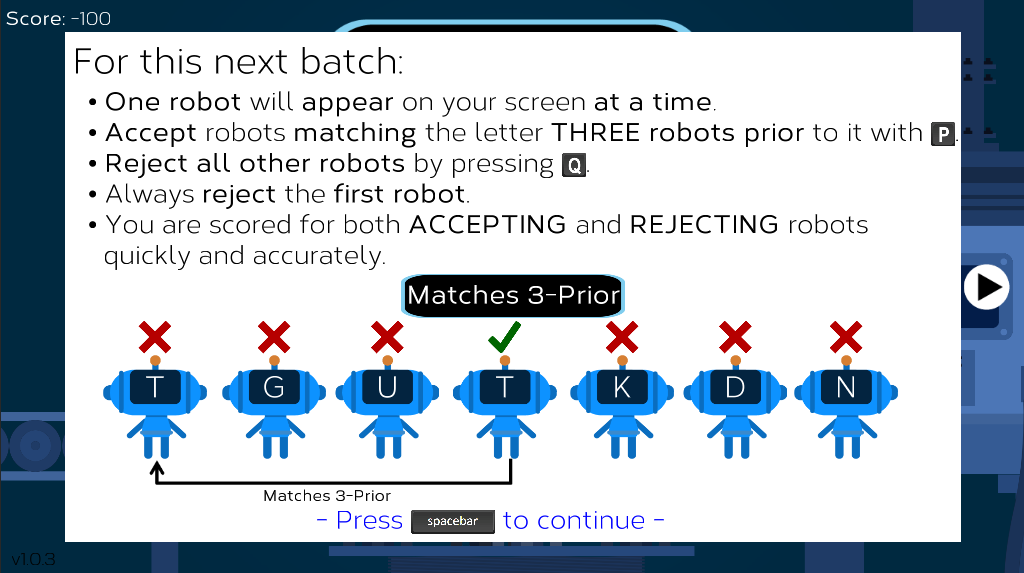
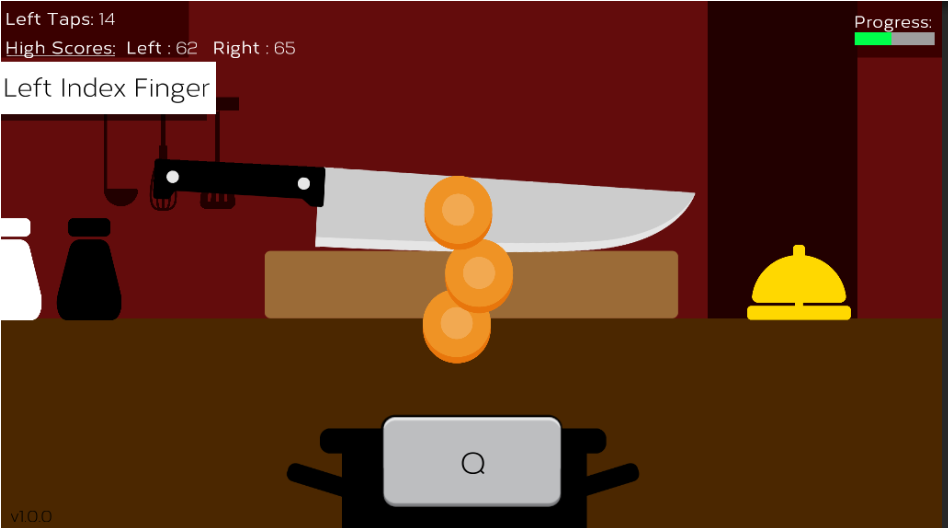
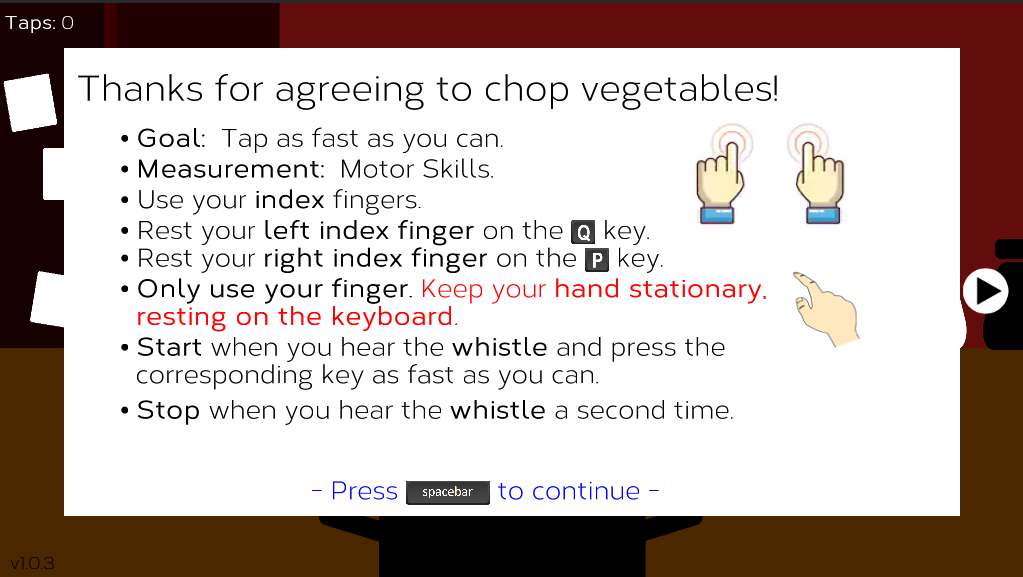
Soup Chef
Finger Tapping Task
Cogsuite’s Soup Chef game is a finger taping task that efficiently samples left and right handed motor responses and bilateral coordination.
This test takes approximately 3 minutes. Subjects are asked to alternatively tap left and right index fingers as fast as possible for a 10 second span, with a five second resting period between each trial. There are 10 total trials: 5 for each finger. Total taps and time between taps is measured.
Task – Finger Tapping
Measurement Time – Approximately 3 minutes
Trials – 10
Trial Time – 10,000 ms
Intertrial Interval – 5000 ms
Measures – Total Taps, Time Between Taps
Measure Dimensions – Left Finger, Right Finger, Block
Balloon Collector
Stop Signal Task
Cogsuite’s Balloon Collector game is a stop-signal task that analyzes performance based on target reaction time, and inhibition accuracy across increasing response inhibition loads, and intra-individual variability in reaction time across target response.
The 13 minute 192 stop-signal task consists of go and no-go trials. In go trials, the subject is presented with a fixation (balloon) followed by a target (letter) to which a speeded response is required. In no-go trials, the same fixation and target are presented, but are then followed by an auditory stop-signal. The onset of the stop signal, or stop-signal delay (SSD), is varied and depends on the subject’s performance. The SSD increases or decreases by 50 milliseconds based on inhibition success or failure.
Task – Stop Signal
Measurement Time – Approximately 13 minutes
Blocks – 3
Trials per Block – 64
Total Trials – 192
Target Display Time – 1000 ms
Input Wait Time – 1250 ms
Intertrial Interval – 2000 ms
Staircase Initial Delay – 250 ms
Staircase Increment – 50 ms
Staircase Lower Threshold – 50 ms
Staircase Upper Threshold – 500 ms
Measures – Reaction Time, Accuracy, Stop Signal Reaction Time (SSRT), Stop Signal Delay (SSD)
Measure Dimensions – Go Trial, No Go Trial, Left Side, Right Side, Block
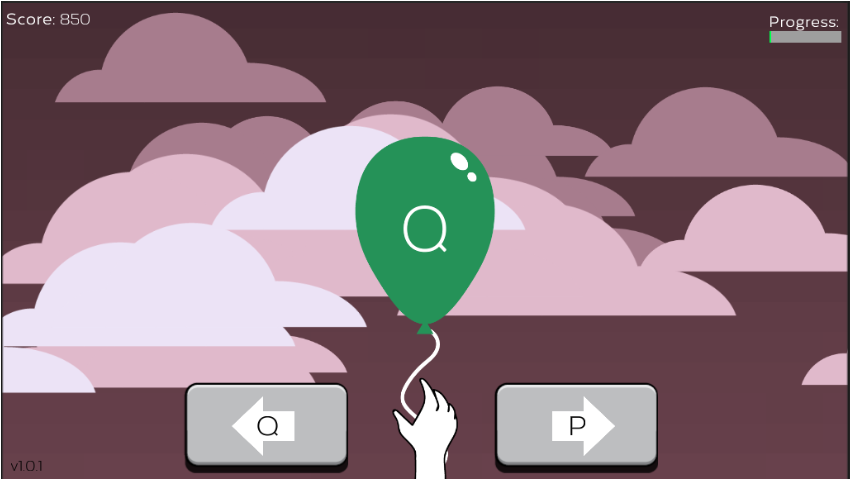
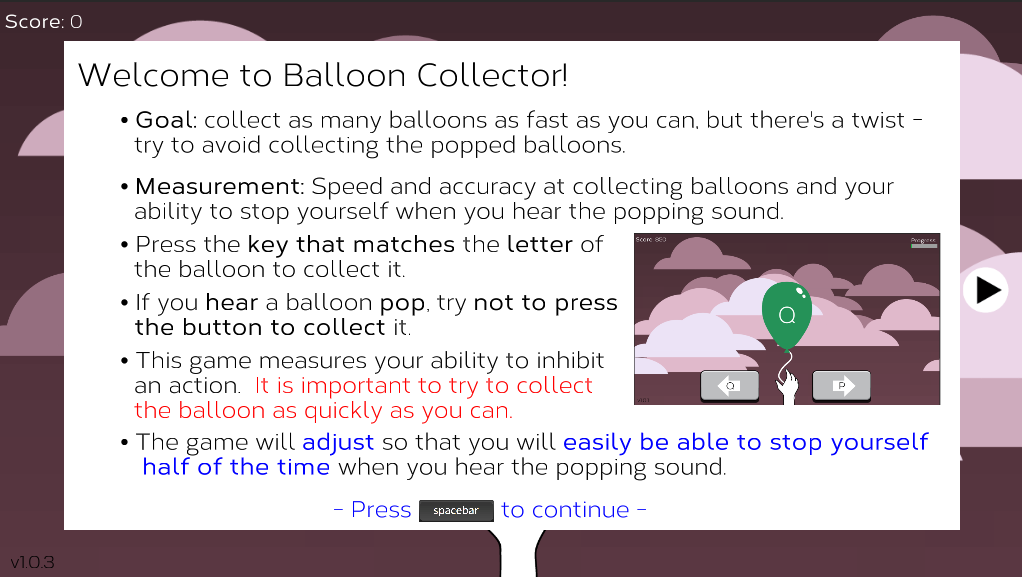
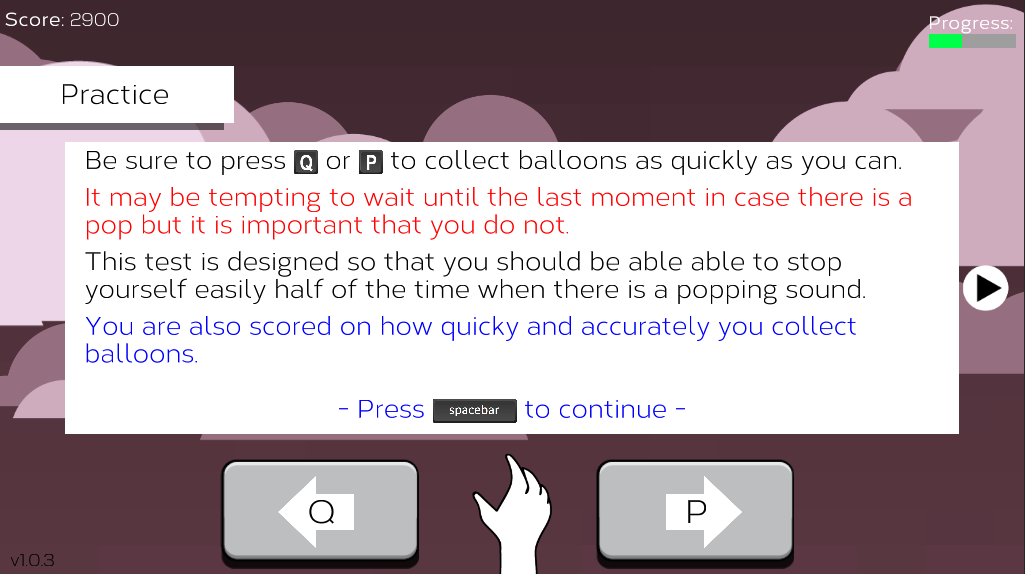
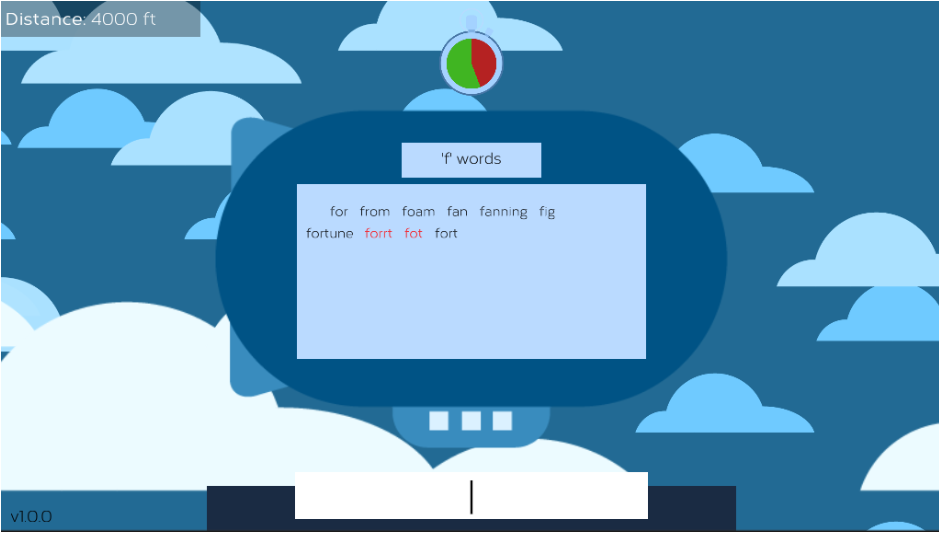
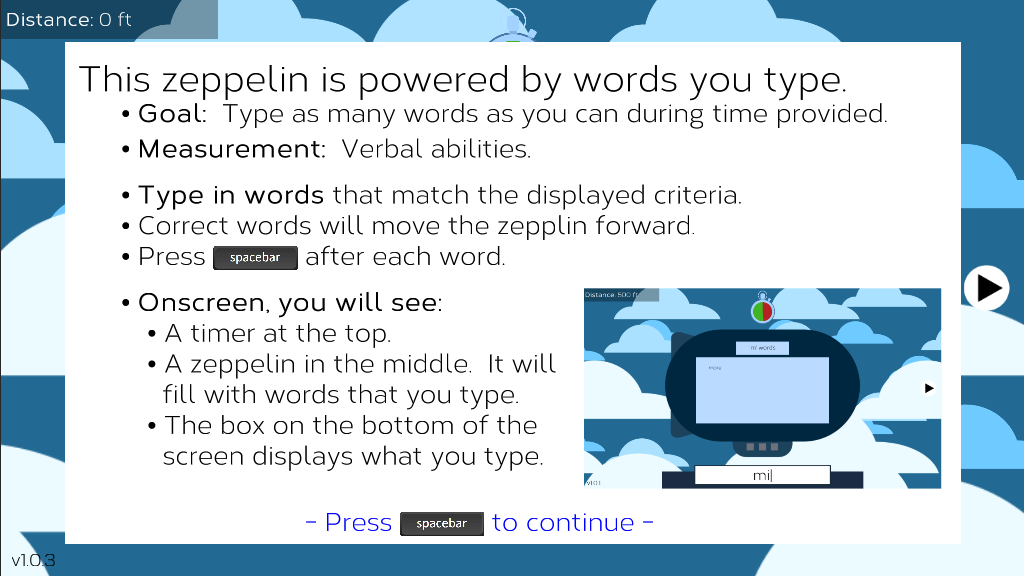
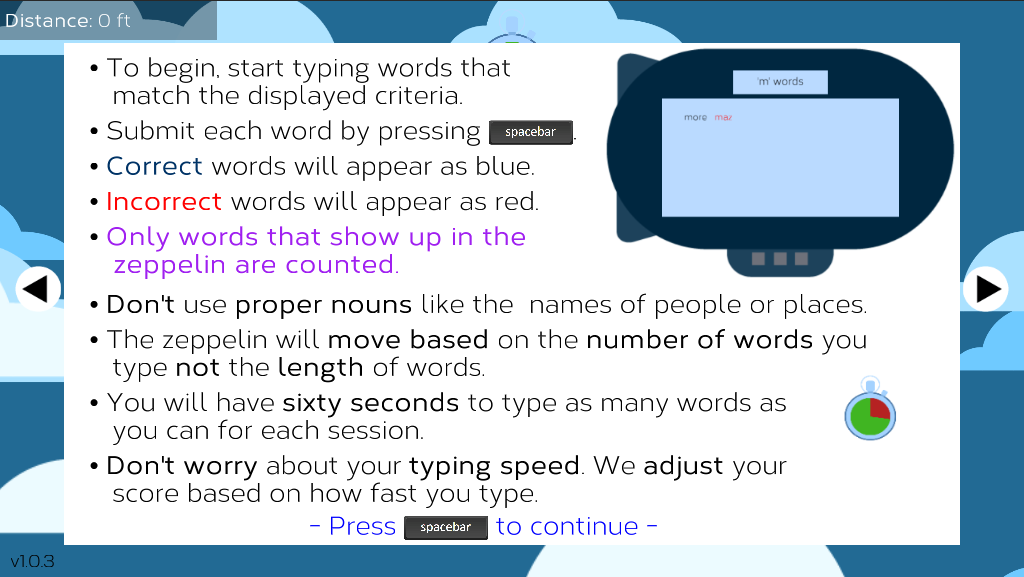
Zeppelin Race
Verbal Fluency Task
Cogsuite’s Zeppelin Race is a Verbal Fluency Task that requires subjects to generate words that belong in a given semantic (e.g. Animals, Grocery Items, Furniture) or phonetic (words that begin with a given letter) category. The zeppelin moves forward with each correct answer.
During the 4 minute 4 trial administration, correct and incorrect words are recorded along with word typing and word generation times. This assessment includes 3 phonetic cue trials (words that begin with F, A, and S) and 1 semantic cue trial (animal words).
Task – Verbal Fluency
Measurement Time – Approximately 4 minutes
Trials – 4
Trial Time – 60,000 ms
Measures – Number of Words, Typing Time (Word and Character), Word Generation Time, Accuracy
Measure Dimensions – Trial (F,A,S,Animal Words)
Zookeeper Match
Substitution Task
Cogsuite’s Zookeeper Match is Substitution Task that assesses higher order processing speed. Paired stimuli are presented that are either match a code key that is displayed onscreen, or that do not match. The paired stimuli will include different animals and their favorite toy.
During the 5 minute assessment, paired animal-toy stimuli will appear on the screen one at a time and the subject will be asked to determine if the animal is paired with the correct toy based on the onscreen code key. Scoring is based on trial by trial reaction time, variability in reaction time, and accuracy.
Task – Substitution
Measurement Time – Approximately 5 minutes
Trials – 1
Trial Duration Time – 120,000 ms
Target Display Time – 2500 ms
Measures – Number matches completed, Accuracy, Reaction Time
Measure Dimensions – Match, Non-Match
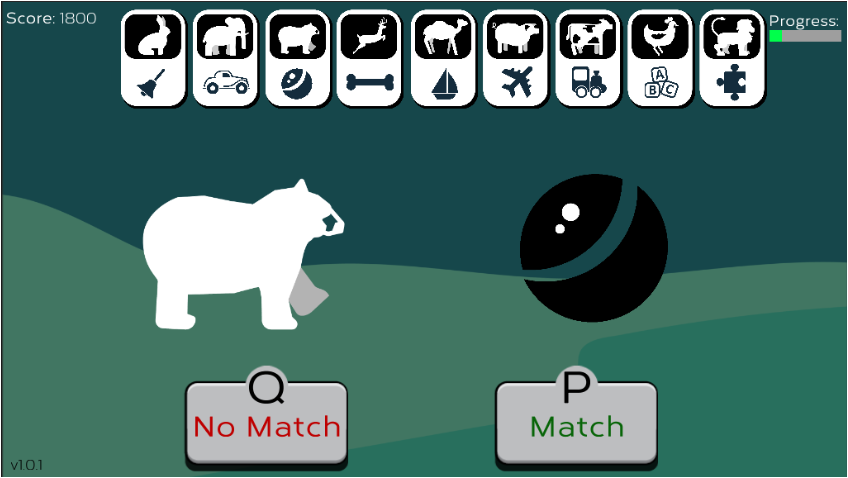
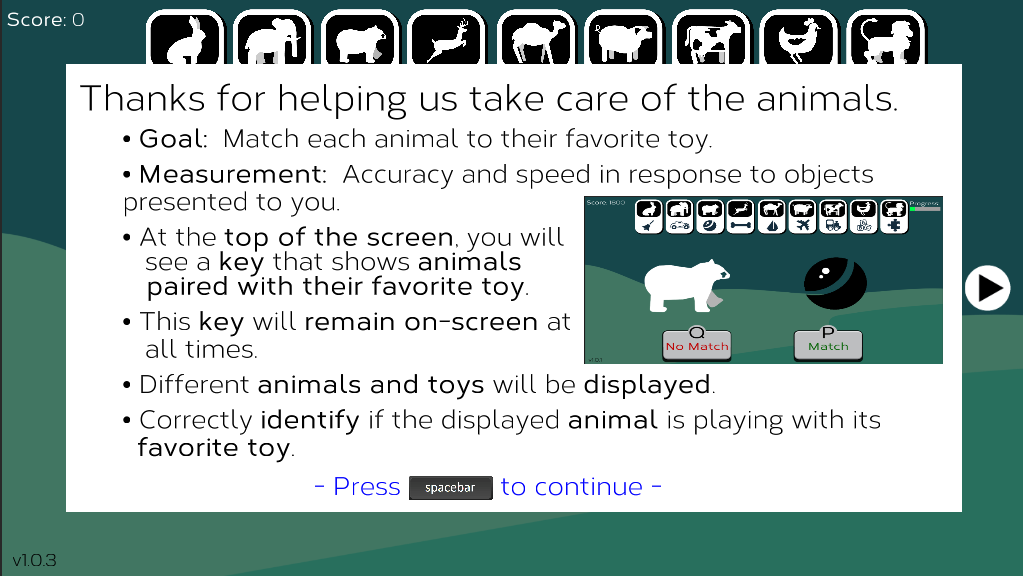
Get More Information
Contact us to learn more about our cognitive measurements or to schedule a demo.

